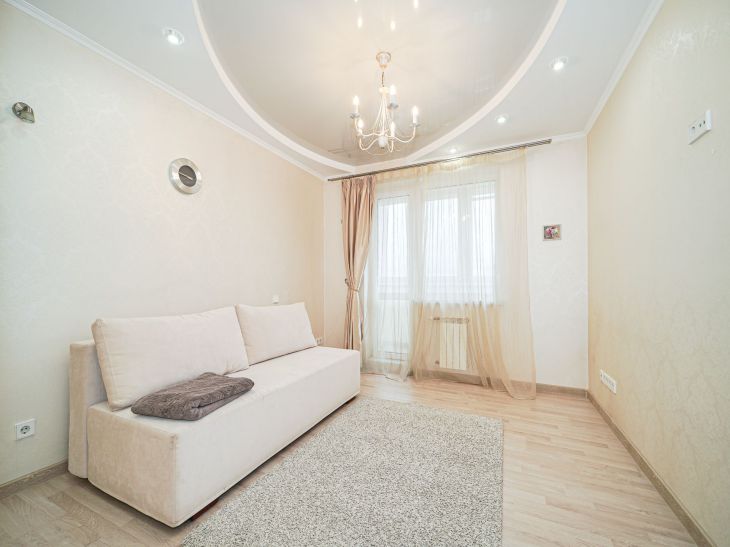A narrow room is a common problem in small apartments, which can create discomfort and a feeling of crampedness.
How to make a narrow room look visually wider, more spacious and cozier?
There are different ways and techniques that allow you to change the perception of space and create an optical effect of expansion, says Yulia Tychino .

Don't put too much furniture
Furniture placement is key to creating the illusion of a larger space. Massive furniture makes the space feel cramped and narrow.
For a small home, multifunctional furniture is ideal, as it will save space. Make sure it fits the space. Furniture with a low back or open legs looks neater, and the room gets more natural light, making it look wider.
Also consider furniture that can be put away when not in use. This will not only save space, but will also make the room appear wider.
Choose the right patterns
Wallpaper is a great tool for creating the illusion of depth. Horizontal patterns will create the illusion of wide walls. To create the illusion of height, choose striped wallpaper.
Patterns can change the way a person sees a space by drawing the eye to certain places. Wallpaper a patterned wall so that it is unclear where one wall ends and another begins. This will make the room appear wider.
Think about mirrors
Using mirrors is one of the most effective ways to expand space, giving it depth and character.
Pay special attention to the uniform lighting of the room. With the help of a mirror, you can create the illusion of a larger space than it actually is. To do this, hang a large mirror horizontally.
Use color
Color is one of the most accessible ways to visually change a space and make a narrow room appear wider.
Use a darker color on one wall to draw attention to the space and make it feel more spacious. Choose a shade that is slightly darker than the other wall color to add sophistication to the space. Another option is to choose a bolder color, such as navy blue, to create an accent.
Alternatively, paint the entire room one color. Use a matching finish on each surface to provide contrast through varying levels of sheen.
Divide the space into zones
Long and narrow rooms are multifunctional, for example, they can serve as a living room and a home office at the same time. Divide the room into sections using zoning.
Carpets not only decorate but also help create zones within a space. They can also make a narrow room appear larger, but avoid a long carpet as it will emphasize the narrow space.
Light up the space
Lighting can be tricky for a narrow room, especially for a living room that has ambient and task lighting. A narrow space can often feel dark or dim, as it often has little natural light.
In such a room, there may not be enough space for floor and table lamps, so finding creative lighting solutions is of utmost importance, as this can create the illusion of a wider room.
Narrow rooms can feel small, so natural light should be used in such rooms, which makes the room appear larger and more inviting. To complement natural light, place pendant lights.
Create the illusion of height
While adding height to a room may not seem like it will solve the problem, drawing the eye up to the ceiling can distract from the width.
Hang curtains closer to the ceiling to create the illusion of height. Choose long ones so that they reach the floor. An interestingly shaped pelmet is another way to add zest to the space.
Another way to make living room ceilings appear higher is to highlight existing architectural features or paint the ceiling.
Be mindful of storage areas
Storage is the last thing on your mind when decorating a narrow room. Built-ins can help reduce visual clutter, automatically making the room feel larger.
Place storage units high up to draw attention to the ceiling. Use mirrored cabinets to reflect light throughout the room.
Previously, we wrote about how to create an atmosphere of comfort.









